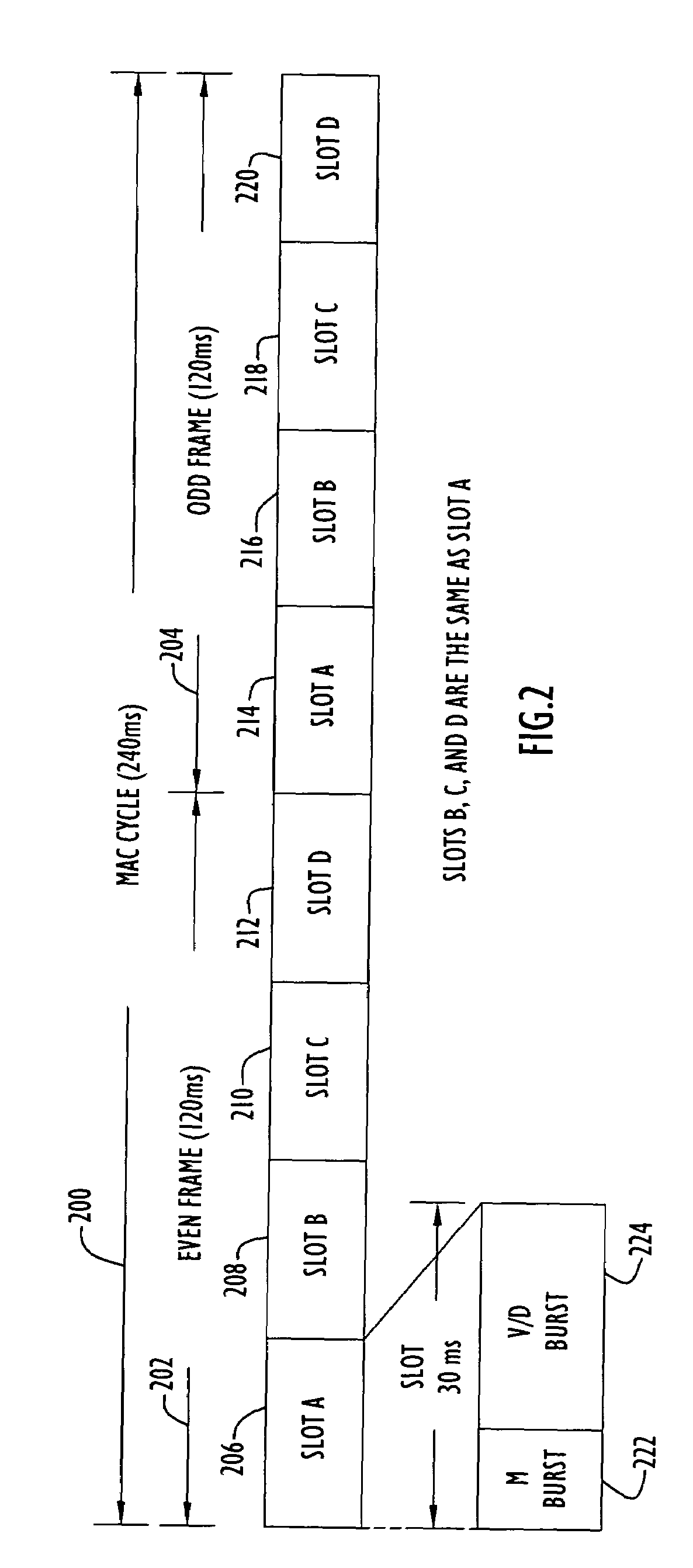Method for diversity site group operations in air/ground communications
a technology of air/ground communication and diversity site group, applied in the field of methods and apparatus for implementing diversity site group operations in air/ground communications, can solve the problems of not addressing dsg operations, no proposal that describes a complete solution to problems, and the difficulty of avoiding simultaneous transmission
- Summary
- Abstract
- Description
- Claims
- Application Information
AI Technical Summary
Benefits of technology
Problems solved by technology
Method used
Image
Examples
Embodiment Construction
[0066]The following detailed explanation of the figures and of the preferred embodiments of the present invention reveal methods and apparatus used to implement a set of techniques that make diversity site group operations, in air / ground communication in an integrated digital voice / digital data communication environment, feasible.
[0067]FIG. 7 is a system level block diagram depicting control site management of a DSG supported by multiple ground stations. As shown, a set of complimenting techniques are used by the control site and the ground stations to permit use of an integrated digital voice and data communication protocol. FIG. 7 illustrates the functional allocations and overall data flows used for DSG operations in a VDL Mode 3 (VDL-3) system. As shown in FIG. 7, a control site distributes a beacon schedule that coordinates the use of management slots by the ground stations 704 of the DSG, controls issuance of handover commands, regulates data burst transmissions and oversees t...
PUM
 Login to View More
Login to View More Abstract
Description
Claims
Application Information
 Login to View More
Login to View More - R&D
- Intellectual Property
- Life Sciences
- Materials
- Tech Scout
- Unparalleled Data Quality
- Higher Quality Content
- 60% Fewer Hallucinations
Browse by: Latest US Patents, China's latest patents, Technical Efficacy Thesaurus, Application Domain, Technology Topic, Popular Technical Reports.
© 2025 PatSnap. All rights reserved.Legal|Privacy policy|Modern Slavery Act Transparency Statement|Sitemap|About US| Contact US: help@patsnap.com



